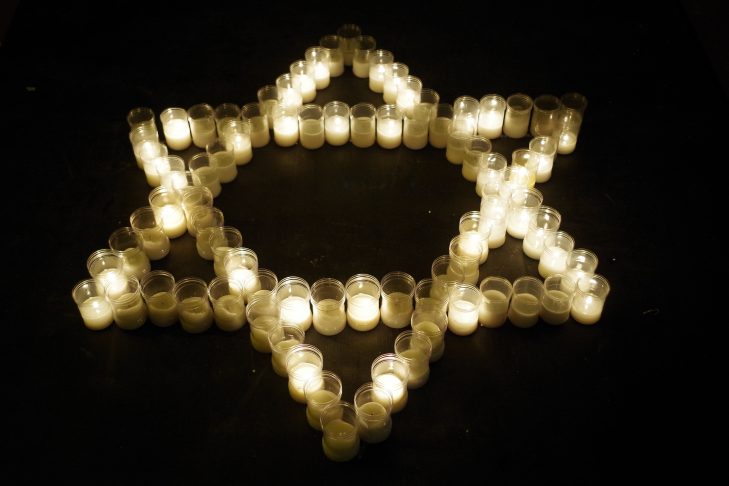I am nowhere near Pittsburgh, and yet friends checked in with me most of the day this past Saturday. They ask me if I was in temple on Saturday morning. Yes, I was in synagogue the morning of the Tree of Life synagogue shooting. Halfway through the service, an alert had gone off on a friend’s smart watch. She whispered to me, “There is an active shooter right now in a Pittsburgh synagogue.” This is my tribe; these are my people. I’ve never met the worshippers at the Tree of Life Synagogue, but yet I know them well. Friends ask if I am afraid in the wake of this horrific event. They ask if my synagogue has enough security.
I have worked for Jewish organizations much of my professional life, and sent my children to Jewish day schools. I have seen these institutions transform from open, welcoming places—people going in and out unchecked—into locked-down citadels. My synagogue recently locked its front doors on weekdays and Sunday. But on Saturday mornings, my synagogue’s doors are unlocked, welcoming anyone who wants to worship there. One lone police officer watches over us.
Related
There has been a notable surge in anti-Semitism in our beloved country, along with a surge of mass shootings. This past Shabbat at a Pittsburgh synagogue, where a brit mila—an 8-day-old baby boy’s sacred entry into the Jewish covenant—was to take place, a white supremacist, a man harboring so much evil in his heart, entered the Tree of Life synagogue and murdered 11 people.
The synagogue was targeted solely because there were Jews in it. The synagogue was in an extremist’s crosshairs. My people were celebrating National Refugee Shabbat under the aegis of HIAS. The acronym originally stood for the “Hebrew Immigration Aid Society.” HIAS, which now just goes by its acronym, has consistently been there for Jewish immigrants and refugees seeking freedom in this great, magnificent country of ours. HIAS was there when my Cuban family escaped Castro’s oppressive regime. It was there to welcome Holocaust survivors, Russian Jews and a bevy of others. Of late, it has taken the lead in helping Syrian refugees and migrants.
At the end of Shabbat, there is the havdalah ceremony. The Hebrew word means “to separate,” and the ritual is intended to distinguish between holy and profane time. This past Shabbat, an act of hate, of willful anti-Semitism, made the holy profane. It is not lost on me that the name of the synagogue in which this tragedy occurred is named “Tree of Life.” In mystical tradition, the Tree of Life symbolizes eternal life. Now 11 people are dead. According to news reports, four more cling to life as I write this. The Anti-Defamation League asserts this is the deadliest attack against Jews in the history of the United States. There have been too many firsts like that in the past few years.
When a Jew dies, close relatives recite the Mourner’s Kaddish. It’s a prayer in which there is not a single word about death. It’s not because Jews are death-averse; it’s because we are faith-inclined. Faith is hard to conjure when we are grief-stricken, and that is why we firmly declare our belief in God at the hardest moments of our lives. I will remember that as I say the Kaddish for my brothers and sisters in Pittsburgh.
I am scared. I am defiant. I will go to temple next week and, God willing, the week after that.





